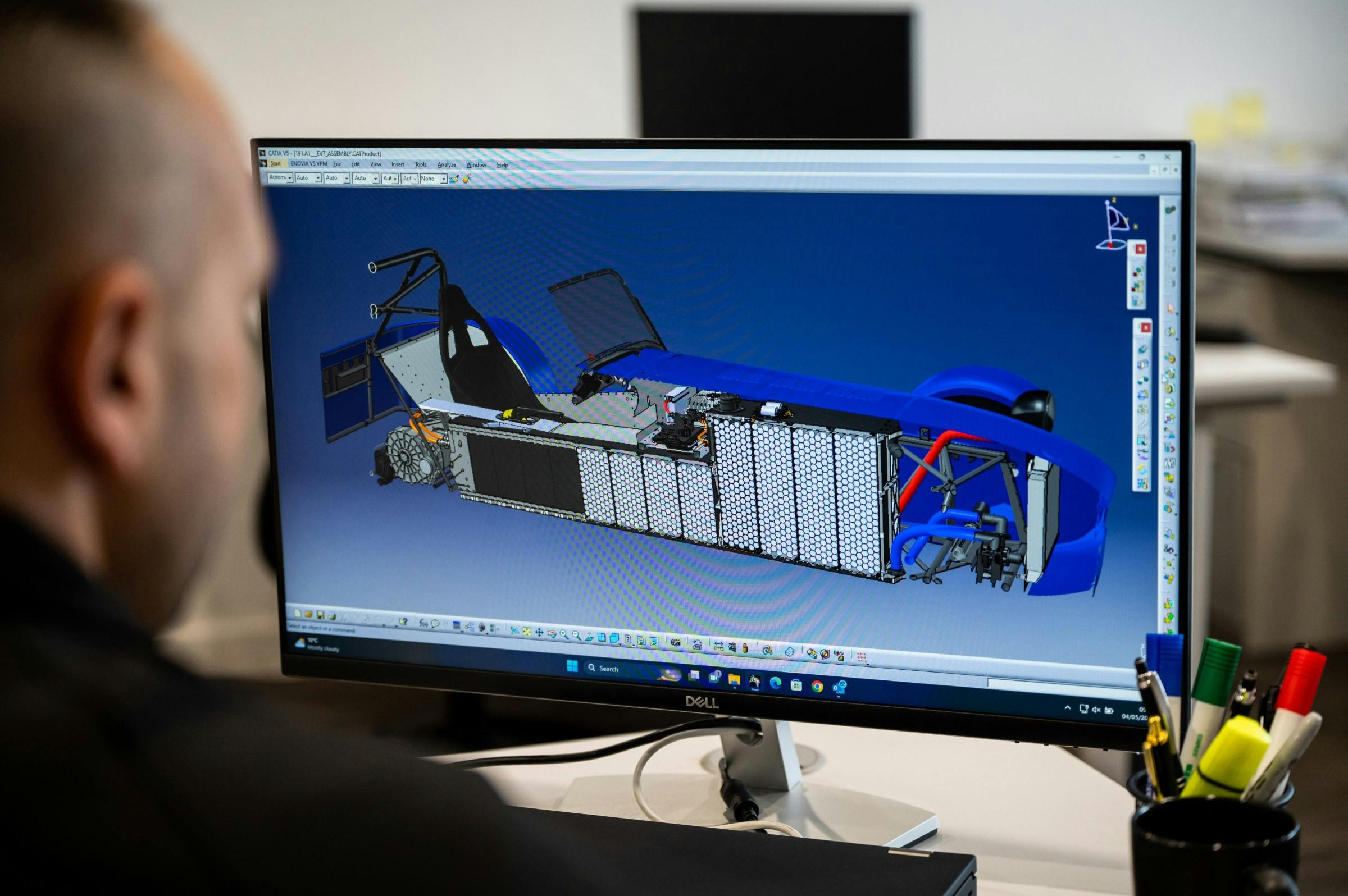Media | Articles
Caterham’s electric Seven is only a concept … for now
What you’re looking at here isn’t a production-ready car. But at some point Caterham very well may sell an electric Seven, and this concept gives an idea of how such a car might look.
Obviously, it looks like a Seven. The essential Seven shape has been around for more than 60 years, so there are few surprises, EV-themed livery aside. Caterham will, in time, surely create other sports cars that go their own stylistic direction, but there’s something reassuring about that familiar silhouette.
We’re more interested in the look of the spec sheet, which suggests the electric Seven may be closer to the gas-powered one than some of us expected.
Let’s get range out of the way first. It is unlikely with current battery technology that those long and crazy road trips that Caterham owners like to take will be possible in an electric version. A Seven isn’t an aerodynamic device. 40kWh of useable battery capacity, while quite impressive for such a small vehicle (the biggest pack in a modern Fiat 500 Electric is 42 kWh), isn’t likely to give the car the 200-plus miles (plus quick refills) that most four-cylinder Sevens are capable of when touring. The battery pack certainly cannot match the 400-plus range of the absurdly economical kei-car-engined Seven 170.
Caterham has an eye on the Seven’s other strength, that of track driving. 40 kWh should give the car what Caterham is calling a “repeatable 20-15-20 drive cycle.” In other words, it can be driven flat out for 20 minutes, come in for a 15-minute recharge (at up to 152-kW of rapid charging speeds), and then head out for another 20 minutes of madness.
Marketplace
Buy and sell classics with confidence
The 40kWh usable capacity is actually drawn from a larger, 51-kWh pack, and this fairly hefty buffer should ensure the battery can tolerate this demanding charge and discharge cycle.
An electric Caterham’s potential appeal is in its performance, and thanks with Swindon Powertrain and its E Axle, the electric Seven makes 240 hp at 9000 rpm, and 184 lb-ft of torque from a standstill. Power-wise, that puts the electric concept somewhere between the 210-hp Seven 420 Cup and the barmy, supercharged Seven 620. The EV’s torque figure likewise falls between those models’ 149 lb-ft and 219 lb-ft.
Caterham claims 0 to 60 mph in around four seconds. Interestingly, the motor has been tuned to be similar in feel to the engine of an existing production Seven, albeit sold only on the European continent: the Seven 485, a 234-hp, 151 lb-ft, 2-liter model available. More than 0-to-60 times though, this instantly accessible torque should make an EV Seven even more of a controllable drift machine than gas-powered versions.
Weight is the other major electric Caterham concern. Here the company has worked hard too, for an all-up curb weight under 1543 pounds (700 kg, as the manufacturer says). When a Seven 170 is well under 1100 pounds, 1500 or so may not sound impressive. However, consider that the only vehicle remotely comparable in the production-car sphere right now is the 1069-pound Citroën Ami, and that won’t even top 30 mph. The electric Seven concept also looks a little better against the heavier current Sevens—that 485 model comes in at 1243 pounds.
Apart from the drivetrain, this concept is all regular, high-performance Seven, with a limited-slip diff, adjustable Bilstein suspension from the 420 Cup, 13-inch alloys, Avon ZZR tires, and ventilated discs all round. The EV Seven does use in the larger, SV chassis, though, to make space for the immersion-cooled battery pack, which occupies the space where the engine and transmission would usually sit. Those who prefer a slimmer Seven may have to give up footprint, at least.
You’ll get to see the EV Seven in the metal at the Goodwood Festival of Speed in July. We’ll learn more about the car—hopefully, including its production viability, and when such a thing might be available—in the coming months. Our perfect Seven still has an engine, but we’re still more than a little intrigued.
***
Check out the Hagerty Media homepage so you don’t miss a single story, or better yet, bookmark it. To get our best stories delivered right to your inbox, subscribe to our newsletters.
Via Hagerty UK


























Blasphemy
I’d 100% use this as a daily driver. Love it!